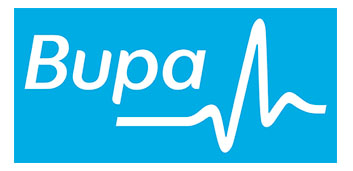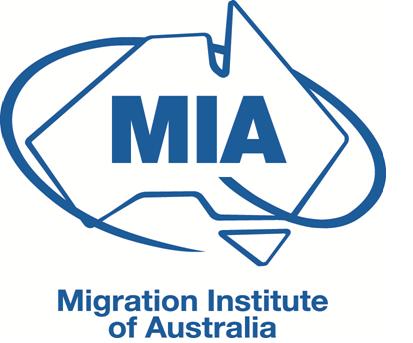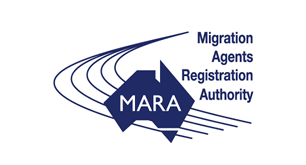ABOUT 491 VISA
491 VISA (SKILLED WORK REGIONAL VISA) PROVISIONAL
491 VISA (SKILLED WORK REGIONAL VISA) – PROVISIONAL
The new 491 visa, Skilled Work Regional (Provisional) subclass 491 visa will enable eligible skilled workers and their families to live, work and study in designated regional areas of Australia for 5 years. Visa holders will be eligible to apply for a Permanent Residence visa after three years. Applicants for this visa must be nominated by:
– an Australian state or territory government agency or
– sponsored by an eligible family member residing in a designated regional area and be invited to apply for the visa, following submission of an Expression of Interest (EOI) in SkillSelect.
The 491 visa is a skilled and a points tested visa . It has a 45 year age limit and requires a positive skills assessment.
Important: See state migration programs closing in response to COVID-19 that are affecting 491 visa.
Am I eligible for a 491 visa?
|
NEW
|
REPLACES
|
|---|---|
|
Skilled Work Regional (Provisional) visa (subclass 491)
|
Skilled Regional (Provisional) visa (subclass 489) – first provisional stream
|
The visa validity period is 5 years. Conditions, namely 8579 will be imposed which will enforce the government’s intentions that visa holders live, work and study only in regional areas. Visa holders may move between regional areas. Regional areas are defined as any area excluding Sydney, Melbourne, and Brisbane. Important change: Perth and Gold Coast are classified as regional areas. You may work in any occupation and for any employer in line with the work and residence conditions attached to your visa.
Holders of the new provisional visas will also be unable to apply for most other skills-based visas in Australia unless they have completed at least three years in a designated regional area unless exceptional circumstances exist. Additionally, similar to current arrangements for the subclass 457 and 482 visa program, holders of the new provisional visas can be negatively impacted by sponsor non-compliance.
The new 491 visa permanent pathway will be:
– Subclass 191 Permanent Residence (Skilled Regional): To meet the requirements of the permanent visa (from November 2022) applicants must have held a subclass 491 or 494 visa for at least 3 years, have complied with the conditions on that visa, and have met minimum taxable income requirements. You must show earnings of at least $53,900 per annum for three years. Your partner can also be the main applicant for the 191 visa if they can demonstrate these criteria.
Effect on current 489 visa to 887 visa pathway:
The Skilled Regional (Provisional) Visa (subclass 489) is now closed to new applicants. Transitional arrangements are put in place for applications that have been lodged and are undecided, as well as applicants whose pathway currently targets the permanent Skilled Regional Visa (subclass 887).
Skilled Migration Changes:
The skilled migration points test changed from November 16, 2019. The changes affect subclass 491 applicants as well as applications for other skilled migration visas that have not been assessed at that time (but only in a way that is beneficial for applicants, by providing additional points). Other points for age, qualifications, overseas and Australian work experience, Australian study, and English points will apply. The new points details are:
– 15 points for nomination by a State or Territory government agency or sponsorship by a family member residing in regional Australia, to live and work in regional Australia;
– 10 points for certain Science, Technology, Engineering and Mathematics (STEM) qualifications;
Partner Points
– 10 points, if one of the following applies:
– skilled spouse or de facto partner (Skills assessment and Competent English); or
– applicants without a spouse or de facto partner (single) or
– 5 points: if your partner has Competent English. Your partner can be over 45 years of age and does not need a Skills Assessment.
TSS vs 491 vs 494 visa
Summary of the 491 visa:
– 15,000 places allocated each year
– be on the 491 occupations list
– Replaces 489 family and state-sponsored visas
– Must be sponsored by an eligible relative or state authority
– Points tested
– Visa will be granted for initially 5 years
– Must live and work for 3 years in regional areas to get Permanent Residence (Skilled Regional) 191 Visa
– You or your partner will need to earn for those 3 years a minimum income each year ($53,900 per annum)- for the State-sponsored stream it may be in any occupation however if employer-sponsored it must be in the nominated occupation.
– Regional Australia is everywhere except Sydney, Melbourne, and Brisbane.
– You may move between regions- Regional areas include Perth, Gold Coast, Sunshine Coast, Lake Macquarie, Illawarra, Geelong, Newcastle, Wollongong, Adelaide, Hobart, and Canberra.
– Cannot apply for any other skilled PR or 820 partners visa for 3 years
– DHA Fee (main applicant) $4,045 and for spouse is: $2,025
Benefits of the 491 visa:
– Priority processing of regional applications
– Incentives for migrants to stay in regional areas longer term as they build ties through workforce and community participation
– More points available to subclass 491 visa applicants
Ranking systems for an invitation to apply for a 491 visa
1. First: Applicant with a skilled partner OR applicants without a partner
2. Second: Applicant with a partner who can demonstrate Competent English (but does not have the skills for skilled partner points)
3. Third: Applicant with a partner who is ineligible for either competent English or Skilled partner points.
|
Definition
|
Locations
|
Regional incentives
|
|
Major Cities
|
Sydney
Melbourne
Brisbane
|
– NA
|
|
Cities and major regional centres
|
Perth
Adelaide
Gold Coast
Sunshine Coast Canberra Newcastle/Lake Macquarie
Wollongong/Illawarra Geelong
Hobart
|
– Access to the dedicated 25,000 regional places.
– Priority processing on regional visas.
– Access to the Regional Occupations List – more jobs compared to non-regional lists.
– International students studying at regional universities will be eligible to access an additional 1 year in Australia on a post-study work visa.
|
|
Regional centres and other regional areas
|
All other locations
|
– Access to the dedicated 25,000 regional places.
– Priority processing on regional visas.
– Access to the Regional Occupations List – more jobs compared to non-regional lists.
– International students studying at regional universities will be eligible to access an additional 2 year in Australia on a post-study work visa.
– Priority in negotiating region-specific Designated Area Migration Agreements (DAMAs).
|
Nomination by an Australian state or territory government agency
If you are nominated for the visa, we will invite you to apply. All state and territory government agencies have their own criteria for deciding who they will nominate. Each state has its own requirements:
– New South Wales
– Northern Territory
– Queensland
– South Australia
– Tasmania
– Victoria
– Western Australia
Am I eligible for a 491 visa?
Sponsorship by an eligible relative (Family stream)
Please note that for the 491 family stream your occupation must be on the MLTSSL list. Your sponsor must be:
– 18 years old or older
– usually resident in a designated area of Australia
– be an Australian citizen, an Australian permanent resident, or an eligible New Zealand citizen
– be your or your partner’s eligible relative
An eligible relative can be:
– a parent
– a child or step-child
– a brother, sister, adoptive brother, adoptive sister, step-brother or step-sister
– an aunt, uncle, adoptive aunt, adoptive uncle, step-aunt or step-uncle
– a nephew, niece, adoptive nephew, adoptive niece, step-nephew or step-niece
– a grandparent, or
– a first cousin
Sponsorship must be approved before you can be granted a visa.
Do the sponsor and the applicant need to reside in the same State/Territory?
There is no requirement in policy or the regulations that the sponsor and applicant must live in the same regional area, however, the sponsor must continue to meet all the sponsorship requirements that they have agreed to, regardless of where they are each living.”
Have a suitable skills assessment
For your application to be valid, you must declare that you have a suitable skills assessment at time of invitation. You will need to provide a copy of this skills assessment with your application. For medical and legal practitioners, we also accept the following as proof of a skills assessment:
– full or unconditional or general medical registration with the Australian Health Practitioner Regulation Agency
– conditional specialist registration with the Australian Health Practitioner Regulation Agency. This only allows you to practice in your specialty. You need no further training or supervision
– admission to practice law in the relevant state or territory
Your skills assessment must have been obtained in the 3 years before the date of your invitation. If the assessment was for a shorter period, that period must not have passed. If your skills were assessed on the basis of a qualification you got in Australia when you held a student visa, the qualification must be from studying a course registered on CRICOS.
Contact us today to speak with our Registered Migration Agents in Melbourne and find more about your visa options.
I’m in Australia and want to Stay in Australia during COVID-19
You can stay in Australia on a Skilled Work Regional (Provisional) visa (subclass 491).
If you wish to stay longer, you must apply for a new visa before your current visa expires.
You may be able to get a bridging visa. This will allow you to stay until:
– you have a new visa or,
– have made arrangements to leave.
If your visa has expired or is expiring book a consultation to discuss your options.
Leaving Australia
If you leave Australia you may not be able to return.
All visa holders must comply with current travel restrictions.
I’m overseas and want to travel to Australia
Skilled Work Regional (Provisional) visa (subclass 491) holders are currently not allowed to travel to Australia.
As you are not a permanent visa holder, you must comply with the current travel restriction.
If you are unsure about your general visa requirements:
Travel restriction exemption
If you think you have a compassionate or compelling reason to travel to Australia, you can apply for an exemption.
Do not travel to Australia until we confirm that you can.
If you are not granted an exemption, you cannot travel to Australia.
All travellers applying for an exemption must apply online.










